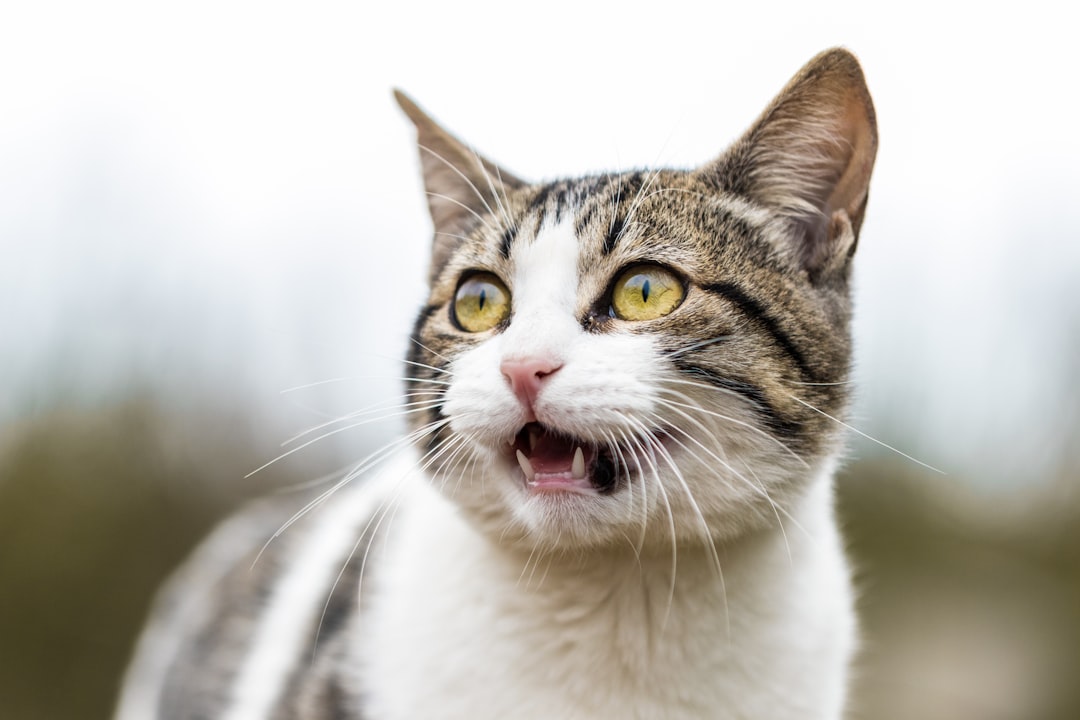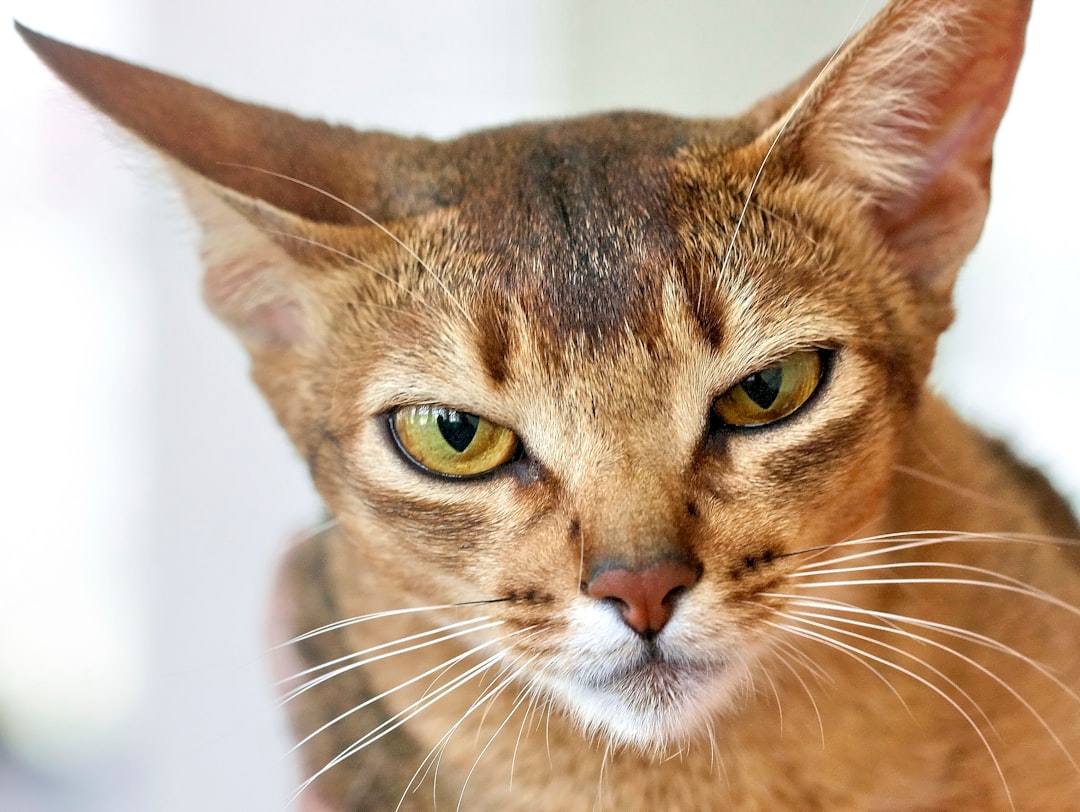Declawing your beloved cat can be a contentious topic among pet owners and veterinarians alike. While some may view it as a practical solution to prevent furniture damage and scratches, others argue it can lead to significant physical and behavioral issues for the feline. In this blog post, we’ll dive deep into the complex world of declawing, exploring both the pros and cons to help you understand the implications of this procedure. From the immediate effects on your cat’s health to alternative options that may better suit their needs, we aim to provide a balanced perspective. Furthermore, we’ll share personal anecdotes from owners of declawed cats and discuss the ethical considerations surrounding this controversial practice, ensuring you have all the necessary information to make an informed decision.
Understanding Declawing: What It Entails
Definition of Declawing
Declawing is a surgical procedure often performed on cats to remove the last bone of each toe, which is essentially akin to amputating a human finger at the last joint. This procedure is not just a simple nail trim; it involves the removal of the claw and the attached bone. Many owners consider it as a solution to manage scratching behaviors that can damage furniture and homes. However, the true implications of declawing go beyond appearance and convenience, raising numerous ethical and health considerations about feline welfare.
The Procedure Explained
The declawing process usually includes the following steps:
| Step | Description |
|---|---|
| Pre-operative Assessment | A veterinarian evaluates the cat’s health and discusses potential risks and alternatives. |
| Anesthesia Administration | General anesthesia is administered to ensure the cat remains unconscious and pain-free during the procedure. |
| Surgical Removal | The surgeon removes the last bone of each toe, typically using a scalpel or laser. |
| Post-Operative Monitoring | Cats are closely monitored post-surgery to manage pain and prevent complications. |
| Home Recovery | Pet owners receive guidelines for at-home care, including pain management and activity restrictions. |
While understanding what declawing entails aids in making informed decisions, it’s crucial to weigh the emotional and physical health impacts on cats that undergo this procedure. In many places, veterinarians and animal advocates urge consideration of less invasive alternatives to declawing.
The Pros of Declawing Your Beloved Cat
Declawing can be a contentious issue among cat owners, but several advantages may appeal to some. Understanding the pros of this procedure can help you make an informed decision regarding your cat’s well-being and your home environment.
Preventing Damage to Furniture
One of the primary reasons owners consider declawing is to protect furniture and belongings from unwanted scratches. Cats are natural scratchers, and their claws can inflict significant damage on sofas, carpets, and walls. Declawing eliminates this behavior, allowing homeowners to maintain their furniture’s aesthetics. Here’s a summary of the benefits:
| Benefit | Description |
|---|---|
| Preservation of Furniture | Protects your investment in costly furnishings and decor. |
| Reduced Repair Costs | Minimizes expenses associated with furniture repairs. |
| Visual Appeal | Keeps home decor looking pristine and well-maintained. |
Reducing Scratching-Related Injuries
Declawing can also be beneficial in reducing the risk of scratching-related injuries. Sharp cat claws can lead to painful scratches to both humans and other pets, posing a potential health risk, especially for young children and individuals with compromised immune systems.
| Benefit | Description |
|---|---|
| Safer Interactions | Less risk of injuries during play or handling. |
| Peace of Mind | Increased comfort when having guests or children in your home. |
| Improved Quality of Life | Reduces stress regarding potential injuries during daily interactions. |
While declawing presents clear advantages for some households, it’s essential to weigh these benefits against the potential drawbacks. Understanding both sides will guide you in making the right choice for your feline companion.
The Cons of Declawing: What to Consider
Physical and Psychological Effects on Declawed Cats
Declawing raises serious concerns regarding the physical and psychological wellbeing of cats. Unlike nail trimming, declawing involves the amputation of the last bone of each toe, which can lead to long-term pain and discomfort.
| Effect | Description |
|---|---|
| Pain | Cats may experience chronic pain or sensitivity in their paws. |
| Behavioral Changes | Many declawed cats exhibit increased aggression or litter box aversion. |
| Altered Mobility | The loss of claws affects a cat’s ability to climb or defend itself. |
| Stress | Cats may experience heightened anxiety without their natural defenses. |
Potential Complications and Recovery Issues
Post-operative recovery can present numerous challenges. While some cats may initially seem fine, others might face complications:
| Complication | Description |
|---|---|
| Infection | Surgical areas may become infected, leading to further vet visits. |
| Hemorrhage | Excessive bleeding can occur during the procedure, posing significant risks. |
| Staffing | Post-surgery care may require additional time and attention from owners. |
| Long-Term Health Issues | There are documented cases of arthritis developing later in life due to altered walking patterns. |
In essence, the cons of declawing reveal a complex interplay of physical pain and emotional distress, underscoring the importance of considering alternatives.
Alternatives to Declawing Your Cat
When considering the pros and cons of declawing, it’s essential to explore humane alternatives that allow your feline friend to maintain its natural behaviors while protecting your home. Here are some effective options:
Nail Trimming Techniques
Regular nail trimming can significantly reduce the damage caused by kitty claws. Here are some techniques to keep in mind:
| Technique | Description |
|---|---|
| Frequent Trims | Trim every 2-3 weeks to prevent nails from becoming too sharp. |
| Using Proper Tools | Employ cat-specific nail clippers for a precise cut. |
| Reward and Praise | Positive reinforcement helps create a stress-free experience. |
By adopting these techniques, you can manage nail length and sharpness effectively, ensuring a safer environment for both your cat and your belongings.
Using Cat Scratch Posts and Toys
Encouraging cats to use their claws on appropriate items is vital. Here are some considerations for optimal scratching:
| Item Type | Benefits |
|---|---|
| Cat Scratch Posts | Provides an outlet for scratching behavior and can prevent damage to furniture. |
| Interactive Scratchers | Engages your cat mentally and physically while deterring them from inappropriate scratching. |
| Toys with Texture | Offers an alternate surface to scratch, keeping your cat entertained and satisfied. |
By providing suitable scratching alternatives, not only do you protect your home, but you also contribute to your cat’s physical and mental well-being. Emphasizing these alternatives can lead to a harmonious living environment for both you and your feline companion.
The Impact of Declawing on Cat Behavior
Behavior Changes in Declawed Cats
Declawing has been shown to significantly impact the behavior of felines, often leading to changes that owners may not anticipate. While some might assume that removing claws would result in more docile and manageable pets, the reality can be quite different. The following table outlines key behavior changes observed in declawed cats:
| Behavior Change | Description |
|---|---|
| Increased Aggression | Injured or stressed cats may exhibit aggressive behavior due to fear or pain. |
| Litter Box Issues | Some declawed cats avoid litter boxes due to discomfort caused by their paws. |
| Decreased Grooming | Cats can groom less effectively, leading to matted fur and skin issues. |
| Over-Grooming | Stress can cause some cats to groom excessively, leading to bald patches. |
How Declawing Affects Playfulness
Playfulness is an essential aspect of a cat’s personality, contributing to their overall well-being. Declawed cats often show changes in their play behavior due to physical discomfort and altered instincts. Many may lose interest in playful activities altogether, leading to a sedentary lifestyle. For instance, the lack of claws can dampen their enthusiasm for hunting and tackling toys. Additionally, declawed cats might rely on their owners more for stimulation, necessitating more engagement to keep them active.
In summary, the impact of declawing on behavior can be profound, leading to various challenges for both the cat and the owner. Recognizing these changes is vital for ensuring the health and happiness of the beloved pets in our lives.
Legal and Ethical Considerations of Declawing
Legislation Around Declawing
Declawing has become a contentious issue, prompting various states and countries to implement legislation regulating or outright banning the practice. In the United States, several states, including New York and California, now prohibit declawing, primarily due to the growing concern for animal welfare. Conversely, regions where declawing remains legal often require veterinarians to provide comprehensive information on the procedure, emphasizing informed consent.
Here’s a simplified comparison of declawing regulations:
| Region | Legislation Status | Notes |
|---|---|---|
| New York | Banned | First state to prohibit declawing. |
| California | Banned | Strong advocacy groups pushing for welfare. |
| United Kingdom | Banned | Legal framework prioritizes animal rights. |
| Florida | Legal (with regulations) | Requires veterinary guidance for owners. |
Ethical Concerns and Animal Welfare
The ethical implications of declawing cannot be overlooked. Many animal advocates argue that declawing is a form of mutilation, as it involves the amputation of the last bones of a cat’s toes, leading to both physical and psychological pain. Critics contend that cats are naturally equipped with claws for a reason, and the removal disrupts their ability to engage in normal feline behaviors.
Moreover, studies have shown that declawed cats may experience post-operative complications and altered behavior patterns, such as increased aggression or litter box aversion. A significant point to consider is the belief that declawing undermines the bond between owner and pet, as it may lead to stress and anxiety for the cats involved.
Ultimately, understanding the legal landscape and ethical implications surrounding declawing can guide pet owners toward making more informed, compassionate choices regarding their furry friends’ welfare.
Declawed Cat: Health Risks and Post-Operative Care
Common Health Risks Post-Declawing
While the decision to declaw can stem from a desire to protect furniture or reduce scratching, it is essential to be aware of the potential health risks associated with the procedure. Below are some common health concerns:
| Health Risk | Description |
|---|---|
| Pain and Discomfort | Cats may experience significant pain during recovery due to the invasive nature of the surgery. |
| Behavioral Changes | Some cats may become more aggressive or anxious after declawing, possibly due to stress or inability to defend themselves. |
| Limping and Lameness | Post-operative complications may lead to difficulty walking or abnormal gaits. |
| Infection Risk | Surgical sites can become infected, especially if not monitored and cared for properly. |
| Long-term Mobility Issues | Some cats may develop chronic pain or arthritis due to altered weight distribution. |
Caring for Your Declawed Cat
Proper post-operative care is crucial to ensure a smooth recovery and minimize health risks. Here are essential tips for caring for a declawed cat:
- Create a Comfortable Space: Ensure your cat has a quiet, soft, and warm recovery area where they can rest undisturbed.
- Monitor Surgical Sites: Regularly check for signs of infection, such as swelling, redness, or discharge. Contact a veterinarian if you notice any abnormalities.
- Limit Activity: Keep your cat indoors and discourage vigorous play or jumping during the recovery period to avoid complications.
- Provide Pain Relief: Follow your veterinarian’s recommendations regarding pain medications to help manage discomfort.
- Litter Changes: Use a softer litter to prevent irritation and pain around the paws. Avoid clumping or coarse litters during recovery.
By addressing health risks and implementing proper care routines, cat owners can help ensure their feline companions recover smoothly from declawing, ultimately supporting their quality of life.
Rehabilitation and Training for Declawed Cats
Adjusting to Life After Declawing
The adjustment period for a declawed cat is crucial and requires patience and understanding. These pets may experience discomfort or confusion as they navigate their new environment without claws.
In this transitional phase, it is essential to monitor their behavior closely. Common signs of stress can include:
| Behavior | Description |
|---|---|
| Increased hiding | Seeking refuge in enclosed spaces |
| Aggression or fear | Exhibiting defensive postures or reactively swatting |
| Reluctance to play | Avoiding activities they once enjoyed |
| Change in litter habits | Possible difficulty in using the litter box comfortably |
To support a smooth transition, provide a warm and quiet space for the cat to recuperate, along with gentle interaction from family members.
Training Your Cat to Use Alternatives
Training a declawed cat to adapt their scratching behavior is vital for their well-being. Here are some practical tips:
- Provide Scratching Posts: Invest in sturdy scratching posts or pads made from materials such as sisal, cardboard, or carpet.
- Positive Reinforcement: Reward desired behaviors with treats or praise when your cat uses the designated areas for scratching.
- Redirecting Attention: Gently redirect their scratching behavior towards appropriate surfaces if they venture to scratch furniture.
By employing these strategies, you can create a nurturing environment that helps declawed cats adjust and thrive while minimizing undesired behaviors.
Personal Stories: Owners of Declawed Cats Speak
Positive Experiences from Owners
Many owners report positive experiences after choosing to declaw their feline companions. For instance, Jane, a long-time cat owner, found that her declawed cat, Max, adapted quickly and lived a pain-free life. “Max no longer scratches the furniture, and I don’t have to worry about him injuring anyone,” she shares. This peace of mind allows her to focus more on bonding with her pet. Owners often cite reduced damage to household items and increased comfort around guests as significant benefits. Additionally, some believe declawing has fostered calmer behavior, as they feel less compelled to discipline their cats for destructive tendencies.
Challenges Faced by Owners of Declawed Cats
Conversely, many owners highlight the challenges linked to declawing. John, who adopted a declawed cat named Bella, expressed concerns about her altered behavior. “She became more fearful and aggressive, often hiding when friends visited,” he recalls. This sentiment is echoed by others who report increased anxiety in their declawed cats, leading to stressful living situations. The post-operative recovery can also present issues, as seen in Mary’s experience; her cat developed litter box aversion after surgery, prompting her to explore alternative solutions.
| Owner Experience | Positive Aspect | Challenge Faced |
|---|---|---|
| Jane – Max | Peace of mind, reduced furniture damage | None reported |
| John – Bella | Calmness from reduced destructiveness | Increased anxiety and hiding behavior |
| Mary – Unnamed Cat | Improved indoor peace | Litter box aversion |
Reflecting on these varied accounts clearly demonstrates that while some owners enjoy the benefits of declawing, others face significant behavioral challenges that may detract from their relationships with their cats.
Making the Right Decision Regarding Your Cat’s Claws
Evaluating Your Cat’s Needs
When considering the best approach for managing your cat’s claws, evaluation of your cat’s individual needs is crucial. It’s important to understand their behavior, activity level, and environment. Some crucial points to consider include:
| Aspect | Considerations |
|---|---|
| Behavior | Does your cat scratch furniture or exhibit stress? |
| Activity Level | Is your cat playful, or does it prefer lounging? |
| Environment | Is your home cat-friendly, or does it pose hazards? |
By examining these factors, you can determine whether declawing is necessary or if alternative solutions would be more fitting for your feline companion.
Factors to Consider Before Declawing
Declawing, as a surgical procedure, involves significant consequences for both the cat and the owner. Before deciding, it’s essential to weigh various factors:
- Health Risks: Understand the potential health complications that may arise from the procedure.
- Behavioral Changes: Consider how declawing may alter your cat’s behavior and emotional well-being.
- Legal Regulations: Be aware that many regions have banned declawing due to ethical concerns.
| Consideration | Details |
|---|---|
| Health Risks | Possible infections and pain. |
| Behavioral Changes | Increased aggression or anxiety. |
| Legal Regulations | Restrictions in certain provinces. |
By taking these factors into account, you can make a well-informed decision that prioritizes your cat’s health and happiness.
Frequently Asked Questions
What does it mean to declaw a cat?
Declawing a cat involves the surgical removal of the last bone of each toe, resulting in the cat being unable to scratch. Contrary to common belief, it is not just a nail trim; it involves an amputation that can lead to pain and behavioral changes. Declawing is often mistaken for a simple nail trim, but it is a major procedure that alters the cat’s natural anatomy and can impact its ability to walk properly and balance itself.
What are the potential health risks associated with declawing a cat?
Declawing can pose several health risks to a cat, including chronic pain, infection, and complications from anesthesia. After the surgery, cats often experience discomfort as they adjust to the loss of their claws, which can lead to an altered gait and chronic pain in their paws. Furthermore, behavioral issues may arise, such as increased aggression or anxiety, as the cat may feel more vulnerable without its primary means of defense.
Are there alternatives to declawing a cat?
Yes, there are several humane alternatives to declawing a cat that can help manage unwanted scratching. These include regular nail trimming to keep the claws short, using scratching posts to redirect their scratching behavior, and providing protective nail caps that can be glued onto the cat’s claws. Additionally, behavioral training and using deterrents can encourage cats to use appropriate scratching surfaces without resorting to surgery.
What are the pros of declawing a cat?
The main pro of declawing is that it can prevent damage to furniture and belongings in homes with pets that tend to scratch. Some cat owners believe that it enhances safety for young children or other pets in the household, reducing the risk of scratches. However, it’s crucial to recognize that these perceived benefits often come at a significant cost to the cat’s health and well-being, making this approach highly controversial among veterinarians and animal welfare advocates.
What are the legal and ethical considerations surrounding declawing?
The legality of declawing varies by region; it is banned in several countries, including the UK and many parts of Europe, due to concerns about animal welfare. Ethically, many animal welfare organizations oppose declawing, arguing that it is an unnecessary surgery that causes pain and potential behavioral issues. As awareness of animal rights increases, many veterinarians advocate for alternatives, reflecting a growing consensus that declawing is not in the best interest of the cat.



